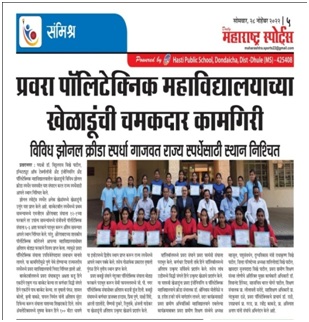About Department
Cloud computing is the delivery of computing services, including servers, storage, databases, networking, software, analytics, and intelligence over the Internet ("the cloud") to offer rapid innovation, flexible resources, and economies of scale. The goal of the cloud is to cut costs and help users focus on their core business without being hindered by IT bottlenecks.
Big data refers to extremely large and diverse collections of structured, unstructured and semi-structured data that grow rapidly over time. These datasets are so huge and complex in volume, velocity and diversity that traditional data management
systems cannot store, process and analyze them. Big Data can handle and manage the enormous amount of data the world needs in their daily lives.
Keeping in view this advancement of cloud computing and big data, our institute took a step ahead of other institutes and decided to provide this opportunity to rural students and started the first branch of "Cloud Computing and Big Data" in 2021-22. The main objective of launching this course is to give exposure to students from rural areas and give them mastery in the field of cloud technology and big data.
Our Vision
To develop rural students as skilled technocrats in the Cloud Computing field.
Our Mission
M1:To impart the trainings to develop skilled students.
M2: To provide technical knowledge through best teaching learning practices.
M3: To develop career oriented students through higher education and industry engagement.
Faculty
| Name | Qualification | Area of specialization | Designation | Profile |
|---|---|---|---|---|
Mrs. Vijayshri Dattatray Vaidya |
M.E. | Computer Enginnering | HOD | View |
Mr.Rakesh Prakash Kumawat |
DCM, BE Computer Engg.,M. Tech | CSE | Lecturer | View |
Mrs. Sonali Vishram Gunjal |
M.E. | Computer Enginnering | Lecturer | View |
Mr. Sagar Rangnath Tribhuvan |
M.E. | Computer Enginnering | Lecturer | View |
Mrs. Dhanashri Somnath Gosavi |
M.B.A. | Information Technology | Lecturer | View |
Mrs. Balika Annasaheb Khakare |
B.Sc. | Computer Science | Lab Assistant. | View |
Facilities
- • Presentation and Demonstrations.
- • videos for better understanding.
- • Augmented Experiments.
- • Micro project-Charts.
- • Technical Magazines, Reference books, Journals.
Co-curricular Achievements
- NATAKE DIKSHA BAJARANG
State level Poster Competition at Ashok Institute of Engineering and Technology Polytechnic, Ashoknagar 11/03/2023.
First Prize
- SIDDHI AMIT JANGALE
State level Power Point Presentation at Ashok Institute of Engineering and Technology Polytechnic, Ashoknagar 11/03/2023.
Second Prize
Sports Achievements
- NATAKE DIKSHA BAJARANG
Sports Association (IEDSSA) Maharashtra State (Girls Sports)
Runner Up - SIDDHI AMIT JANGALE
Academic Year 2023-24:
- 1. Voice Alert based Smart Blind Stick.
- 2. Bridge Monitoring & Alert based system.
- 3. Detection of Lung Diseases using Deep Learning.
- 4. Bus location tracking & alert to students
- 5. Water Pollution Detection Through Video Surveillance Using Cloud and Deep Learning models
- 6. Securing college Document through block chain in Cloud
- 7. Multiple Keyword Search in cloud data using parallel computing System
- 8. Securing video Steganography using Cloud
| Sr. No. | Name of Company | Area of collaboration |
|---|---|---|
1 |
KasNet Technologies Pvt Ltd Pune |
1. Industrial Training Program For Student And Staff 2. Conducting Experts And workshops 3. Allotment Of Project Work to Final Year students 4. Industrial Visit |
2 |
Microcert Technologies USA |
1. Industrial Training Program For Student And Staff 2. Conducting Experts And workshops 3. Allotment Of Project Work to Final Year students 4. Industrial Visit |
3 |
Right Click Technology and Security System Pune |
1. Industrial Training Program For Student And Staff 2. Conducting Experts And workshops 3. Allotment Of Project Work to Final Year students 4. Industrial Visit |
4 |
Rajavi Technologies Pune |
1. Industrial Training Program For Student And Staff 2. Conducting Experts And workshops 3. Allotment Of Project Work to Final Year students 4. Industrial Visit |
5 |
ProAzure Software Solutions Pvt Ltd Pune |
1. Industrial Training Program For Student And Staff 2. Conducting Experts And workshops 3. Allotment Of Project Work to Final Year students 4. Industrial Visit |
6 |
Innovation Hub, Nashik |
1. Industrial Training Program For Student And Staff 2. Conducting Experts And workshops 3. Allotment Of Project Work to Final Year students 4. Industrial Visit |
7 |
Innovatus Technologies Pvt Ltd. Pune |
1. Industrial Training Program For Student And Staff 2. Conducting Experts And workshops 3. Allotment Of Project Work to Final Year students 4. Industrial Visit |
- PEO 1: Utilize cloud computing skills to handle the data storage problems.
- PEO 2:Implement the technical knowledge to meet the growing needs of cloud computing profession.
- PEO 3: Enhance the career growth through continuous learning and industry support.
Program Outcome:
After completion of Diploma, Cloud Computing and Big Data Engineers will be able to:
- PO1: Basic and Discipline specific knowledge: Apply knowledge of basic mathematics, science and engineering fundamentals and engineering specialization to solve the engineering problems.
- PO2: Problem analysis: Identify and analyze well-defined engineering problems using codified standard methods.
- PO3: Design/ development of solutions: Design solutions for well-defined technical problems and assist with the design of systems components or processes to meet specified needs.
- PO4: Engineering Tools, Experimentation and Testing: Apply modern engineering tools and appropriate technique to conduct standard tests and measurements.
- PO5: Engineering practices for society, sustainability and environment: Apply appropriate technology in context of society, sustainability, environment and ethical practices.
- PO6:Project Management: Use engineering management principles individually, as a team member or a leader to manage projects and effectively communicate about well-defined engineering activities.
- PO7: Life-long learning: Ability to analyze individual needs and engage in updating in the context of technological changes.
Program Specific Outcome:
- PSO-1:Implement the concepts of fundamental engineering, software, cloud and database to develop the solutions for engineering problems.
- PSO-2: Apply cloud computing and computer knowledge for development of innovative products.
- PSO-3: Design and develop quality product using programming and virtual environment for industry and society.



Papers Published
- Miss. V. D. Vaidya
A Survey on Efficient Data Cube Computation Methodologies for Business Intelligence Volume 8, Issue 5 May 2023
- Miss. V. D. Vaidya
A Review on Data Mining and Data Preprocessing Techniques in Data Mining Volume-9, Issue-3, 2023
| Sr.No. | Name of faculty | Name of journal | Title of paper |
1 |
Mr. R. P. Kumawat |
IJARIIE |
Emerging Trends in Computer And I Information Technology Vol-9 Issue-3 2023 IJARIIE-ISSN(O)-2395-4396 paper id 21040 |
2 |
Miss. S. V. Gunjal |
IJARIIE |
RTC Based Water Distribution Through Solenoid Valve Vol-9 Issue-2 2023 IJARIIE-ISSN(O)-2395- 4396 pages 2509-2514 |
3 |
Miss. D. R. Jondhale |
IJARIIE |
RTC Based Water Distribution Through Solenoid Valve Vol-9 Issue-2 2023 IJARIIE-ISSN(O)-2395- 4396 pages 2509-2514 |
4 |
Miss. D. R. Jondhale |
IJARIIE |
Emerging Trends in Computer And In Information Technology Vol-9 Issue-3 2023 IJARIIE-ISSN(O)-2395-4396 paper id 21040 |









